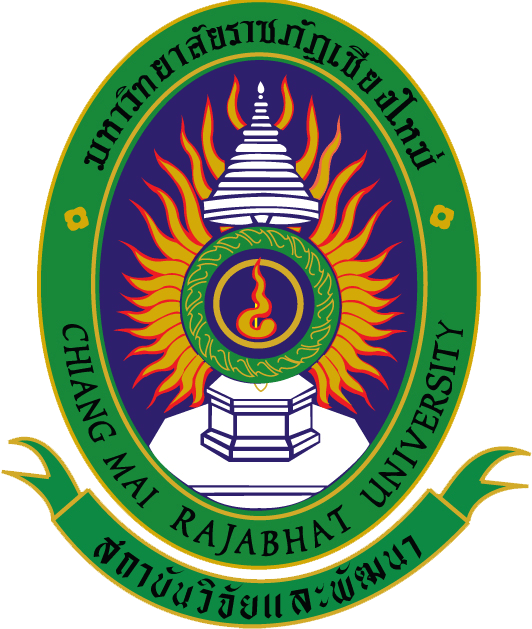
ระบบสารสนเทศงานวิจัย สถาบันวิจัยและพัฒนา มหาวิทยาลัยราชภัฏเชียงใหม่
Research Information System(RIS)
กลยุทธ์การพัฒนาสถานศึกษาสู่ความเป็นเลิศทางพลังงานเพื่อการเสริมสร้างรากฐานที่มั่นคงของสังคม
อาจารย์ ดร.ณัฐิยา ตันตรานนท์
คณะครุศาสตร์
คำสำคัญ :
เลขทะเบียน :
1333-63-ADIC-CMRU
บทคัดย่อ
งานวิจัยนี้มีวัตถุประสงค์เพื่อพัฒนากลยุทธ์สู่ความเป็นเลิศทางพลังงานและสิ่งแวดล้อมของโรงเรียนแม่วินสามัคคี ตลอดทั้งนำกลยุทธ์ลงสู่การปฏิบัติและประเมินผล โดยใช้วิธีกระบวนการลำดับชั้นเชิงวิเคราะห์ (Analytic Hierarchy Process: AHP) ในการคัดเลือกกลยุทธ์ที่เหมาะสม และมีเกณฑ์ในการคัดเลือกกลยุทธ์ทั้งสิ้น 4 เกณฑ์ ตามแบบจำลอง CIPP Model ได้แก่ การประเมินบริบท (Context Evaluation), การประเมินปัจจัยนำเข้า (Input Evaluation), การประเมินกระบวนการ (Process Evaluation) และการประเมินผลผลิต (Product Evaluation) ผู้วิจัยทำการสนทนากลุ่มและสอบถามความคิดเห็นจากผู้บริหารและครูโรงเรียนแม่วินสามัคคี จำนวน 20 คน ผลการวิจัย พบว่า กลยุทธ์การบริหารโรงเรียนสู่ความเป็นเลิศทางพลังงานและสิ่งแวดล้อม ประกอบไปด้วย 4 กลยุทธ์หลัก ได้แก่ 1) สร้างหลักสูตรและส่งเสริมกิจกรรมการเรียนรู้แบบบูรณาการทางพลังงานและสิ่งแวดล้อม 2) ยกระดับทรัพยากรบุคคลให้มีความเชี่ยวชาญทางพลังงานและสิ่งแวดล้อม 3) พัฒนาแหล่งเรียนรู้โรงเรียนสีเขียว และ 4) ปรับระบบการจัดการพลังงานเพื่อลดต้นทุนค่าใช้จ่ายและเพิ่มรายได้จากพลังงานทดแทน โดยผลการวิเคราะห์ด้วยเทคนิค AHP พบว่า กลยุทธ์ที่เหมาะสมที่สุด คือ การยกระดับทรัพยากรบุคคลให้มีความเชี่ยวชาญทางพลังงานและสิ่งแวดล้อม โดยมีค่าน้ำหนักความสำคัญอยู่ที่ 0.3091
การฝึกอบรมให้ความรู้แก่บุคลากรโรงเรียนแม่วินสามัคคีสู่ความเป็นเลิศทางพลังงานและสิ่งแวดล้อม เป็นการยกระดับบุคลากรให้มีศักยภาพและความเชี่ยวชาญในการจัดการเรียนการสอนและการถ่ายทอดองค์ความรู้สู่นักเรียน จากการจัดฝึกอบรมให้ความรู้แก่บุคลากรโรงเรียนแม่วินสามัคคี จำนวน 20 คน พบว่า ผู้เข้าฝึกอบรมมีความพึงพอใจต่อเนื้อหาและกิจกรรมที่ได้รับในระดับมากที่สุด คิดเป็นค่าเฉลี่ย 4.55 มากไปกว่านี้ จากการวิเคราะห์ผลตอบแทนทางเศรษฐกิจ สังคม และสิ่งแวดล้อมของการฝึกอบรมให้ความรู้แก่บุคลากรโรงเรียนแม่วินสามัคคี พบว่า ประโยชน์ที่ได้รับจากการฝึกอบรม ได้แก่ 1) โรงเรียนแม่วินสามัคคี สามารถลดภาระค่าใช้จ่ายในโรงอาหารจากการใช้ก๊าซชีวภาพในการประกอบอาหารทดแทนก๊าซหุงต้ม (LPG) ตลอดทั้งยังมีรายได้เพิ่มขึ้นจากการขายขยะรีไซเคิล 2) บุคลากรที่เข้ารับการฝึกอบรม มีความรู้เพิ่มขึ้นในการแปรรูปขยะเป็นพลังงาน ตลอดทั้งสามารถเป็นวิทยากรเพื่อถ่ายทอดองค์ความรู้สู่บุคคลอื่นได้ 3) บุคลากรและนักเรียนโรงเรียนแม่วินสามัคคีจะมีสุขภาพที่ดีขึ้น เนื่องจากปุ๋ยชีวภาพที่ได้จากระบบก๊าซชีวภาพเป็นการทดแทนการใช้ปุ๋ยคอกจากมูลสัตว์ตามที่โรงเรียนดำเนินการอยู่ ซึ่งปุ๋ยคอกก่อให้เกิดพยาธิและสามารถปนเปื้อนมากับผักสดได้ และ 4) ชุมชนและสังคมได้รับประโยชน์จากการลดการปล่อยก๊าซเรือนกระจก จากกิจกรรมการแปรรูปขยะเป็นพลังงานที่โรงเรียนแม่วินสามัคคีจะดำเนินการ
จากการวิเคราะห์ผลตอบแทนทางสังคมจากการลงทุน (SROI) พบว่า ผลประโยชน์ในการพัฒนาบุคลากรสู่ความเป็นเลิศทางพลังงานและสิ่งแวดล้อม มีมูลค่าเท่ากับ 4,978.99 ดอลลาร์สหรัฐ หรือ 158,331.88 บาท ครอบคลุมระยะเวลาทั้งหมด 5 ปี ซึ่งจากการคำนวนหาอัตราส่วนผลตอบแทนทางสังคมจากการลงทุน (SROI) พบว่า ทุก 1 ดอลลาร์สหรัฐที่ลงทุนไปในการฝึกอบรมให้ความรู้แก่บุคลากรโรงเรียนแม่วินสามัคคีสู่ความเป็นเลิศทางพลังงานและสิ่งแวดล้อม สามารถสร้างผลประโยชน์ให้สังคมด้วยมูลค่า 4.49 ดอลลาร์สหรัฐ หรือเท่ากับ 142.78 บาท ซึ่งสามารถอธิบายได้ว่าการฝึกอบรมเพื่อพัฒนาบุคลากรมีความคุ้มค่าและให้ผลประโยชน์ต่อสังคมมากกว่าเงินลงทุน
Abstract
The aims of this research were to develop school administration strategies toward environmental and energy excellence for Maewinsamakkee school, implement strategies into practice, and evaluate the results. The analytic hierarchy process (AHP) was applied to select most suitable strategies for successful implementation. The CIPP evaluation model was used as the selection criteria for implementation decisions, including context evaluation, input evaluation, process evaluation, as well as product evaluation. A focus group discussion and a questionnaire were used to construct and select school administrative strategies from 20 administrators and teachers. The results showed four types of alternative strategies that could be adopted for energy and environmental excellence. These include 1) creating a curriculum and promoting learning activities with the incorporation of energy and environment; 2) equipping human resources with expertise in energy and environment; 3) developing green school learning resources; and 4) revising the energy management system to reduce costs and increase income from renewable energy. The AHP analysis revealed that equipping human resources with expertise in energy and environment was the most suitable strategy with the total weight of 0.3091.
Professional development of Maewinsamakkee staff members for energy and environmental excellence would equip them to be more potential and expertise in teaching and learning, and provide effective knowledge transfer to the students. Results from the training workshop of 20 school members indicated that they were satisfied with the content and activities they received at a highest level of 4.55 out of five-point rating scale. Moreover, an analysis of training workshop outcomes for economic, social, and environmental dimensions revealed that 1) Maewinsamakkee school could reduce the energy cost of cooking from substituting LPG with biogas, and earn more income from recycling wastes; 2) School staff attending training workshop would gain new knowledge in waste-to-energy, and be able to lead lectures at seminars and workshops; 3) Maewinsamakkee staff members and students would have better health from using biogas digestate as a replacement fertilizers; and 4) Community and society would gain benefits from the waste-to-energy activity resulting in greenhouse gas emission reduction.
An analysis of social return on investment (SROI) indicated that the benefit of investing in human resource development for energy and environmental excellence equal to 4,978.99 USD or 158,331.88 baht for a total period of 5 years. It was showed that every 1 USD invested in staff training and development generated 4.49 USD of social value (or equal to 142.78 baht). Finally, it was revealed that supporting staff in their professional development, therefore, beneficial to society and worth the investment.
ไฟล์งานวิจัย
1.3 รายงานวิจัยฉบับสมบูรณ์_ณัฐิยา.pdf
ข้อมูลการตีพิมพ์
ชื่อบทความ :
แหล่งที่ตีพิมพ์ :Pertanika J. Soc. Sci. & Hum. 31 (1): 401 - 422 (2023)
ปีที่ตีพิมพ์ :2566
28 11 มี.ค. 2563
กองทุนวิจัย มหาวิทยาลัยราชภัฏเชียงใหม่
202 ถ.ช้างเผือก ต.ช้างเผือก อ.เมือง จ.เชียงใหม่ 503000
053-88-5555